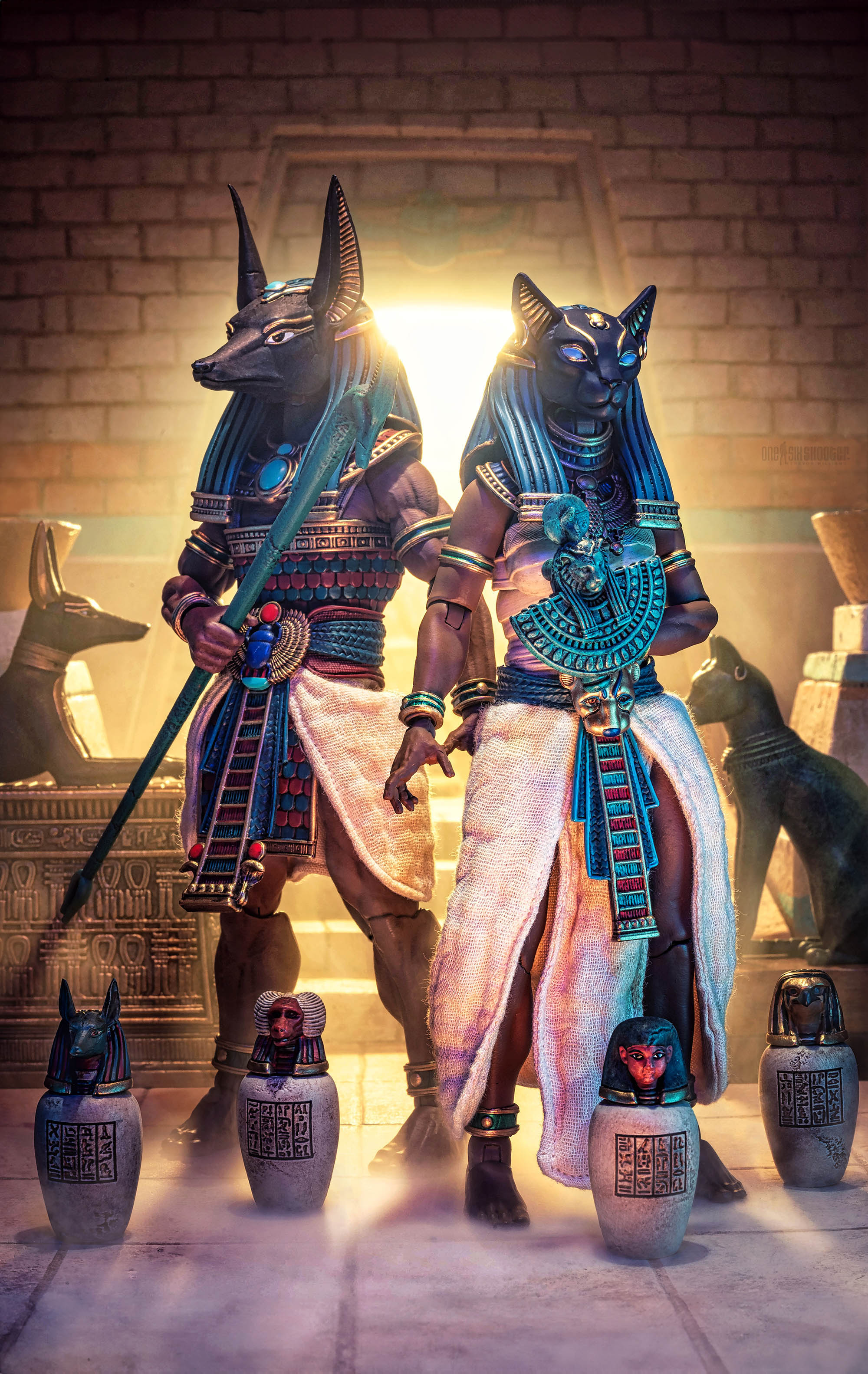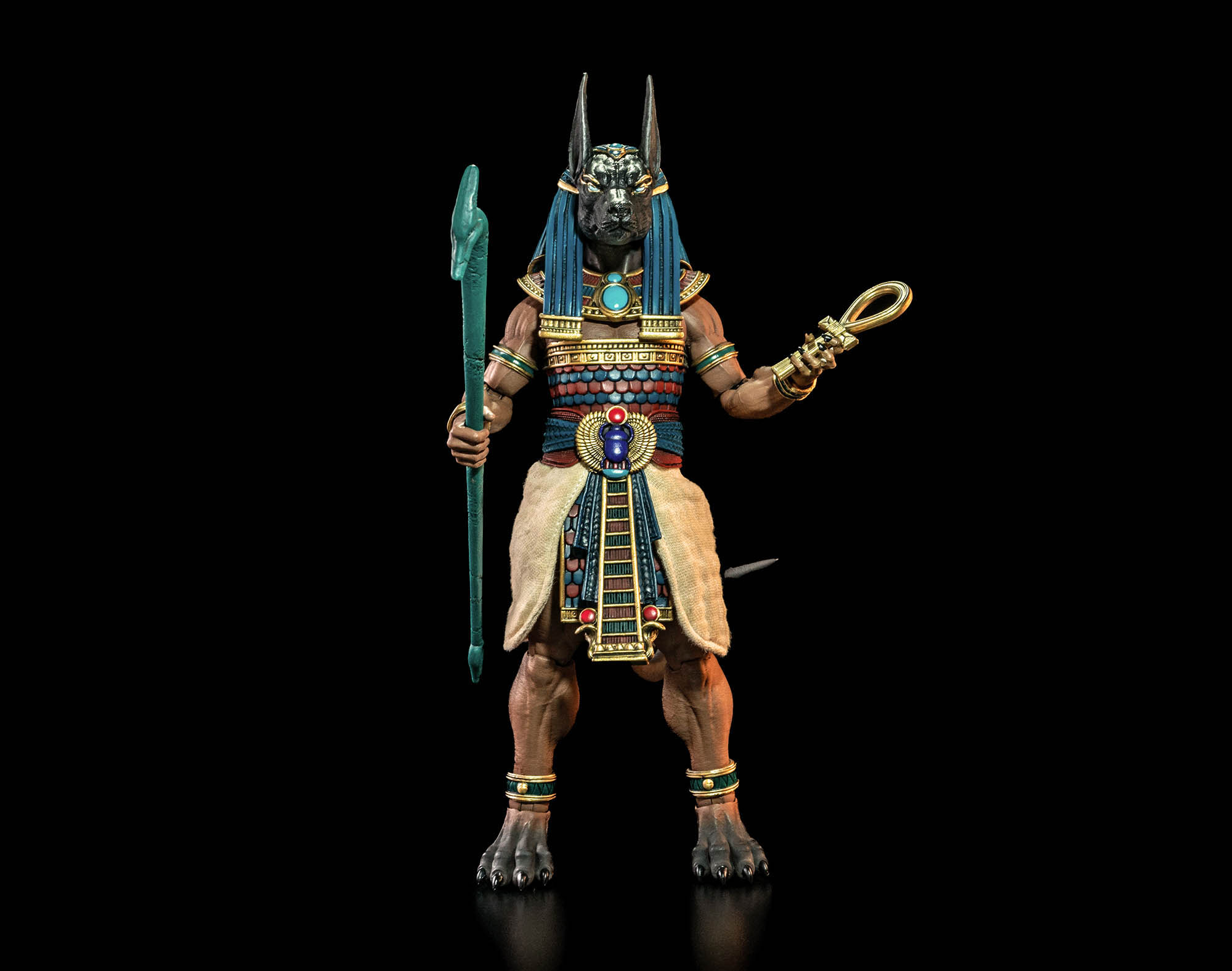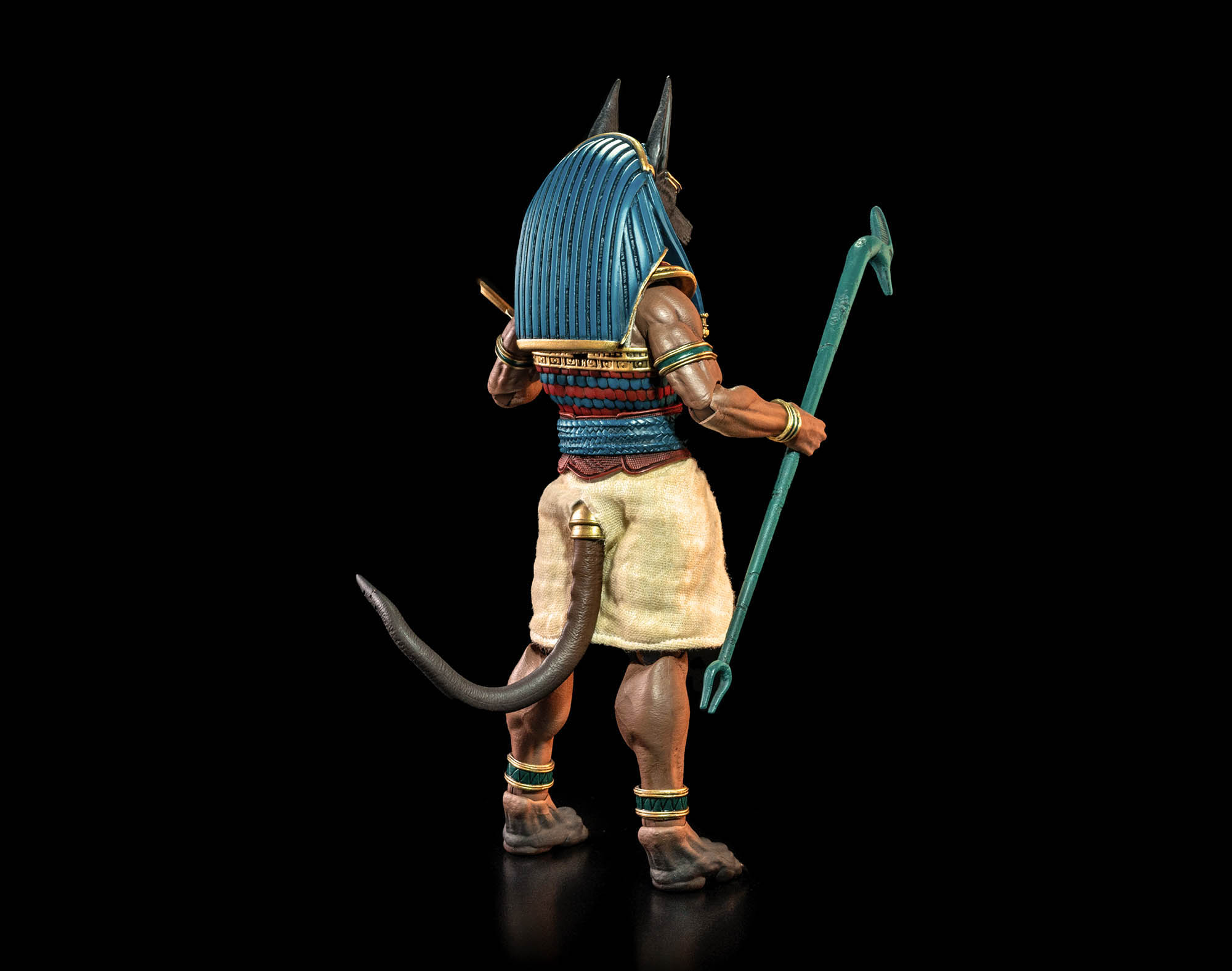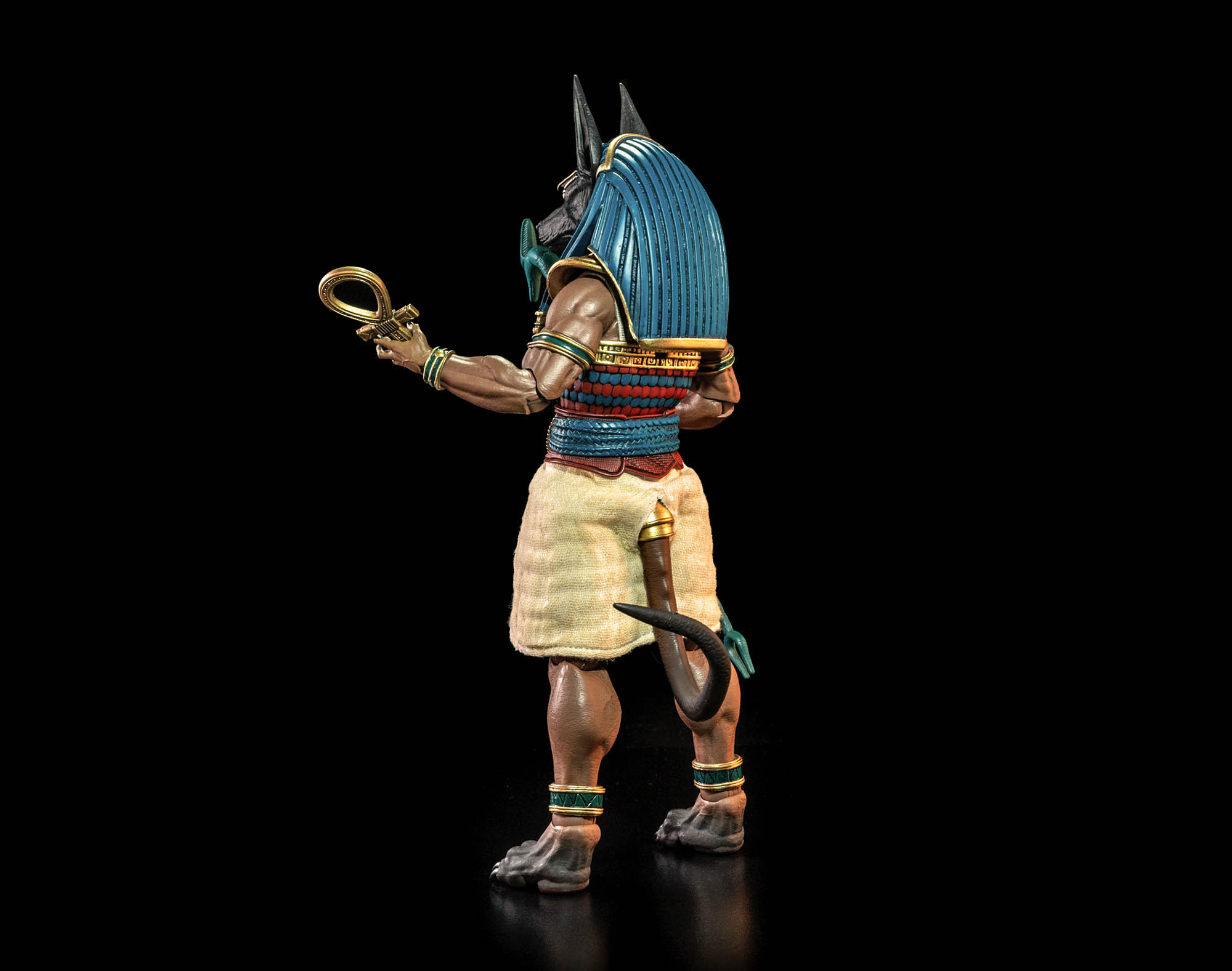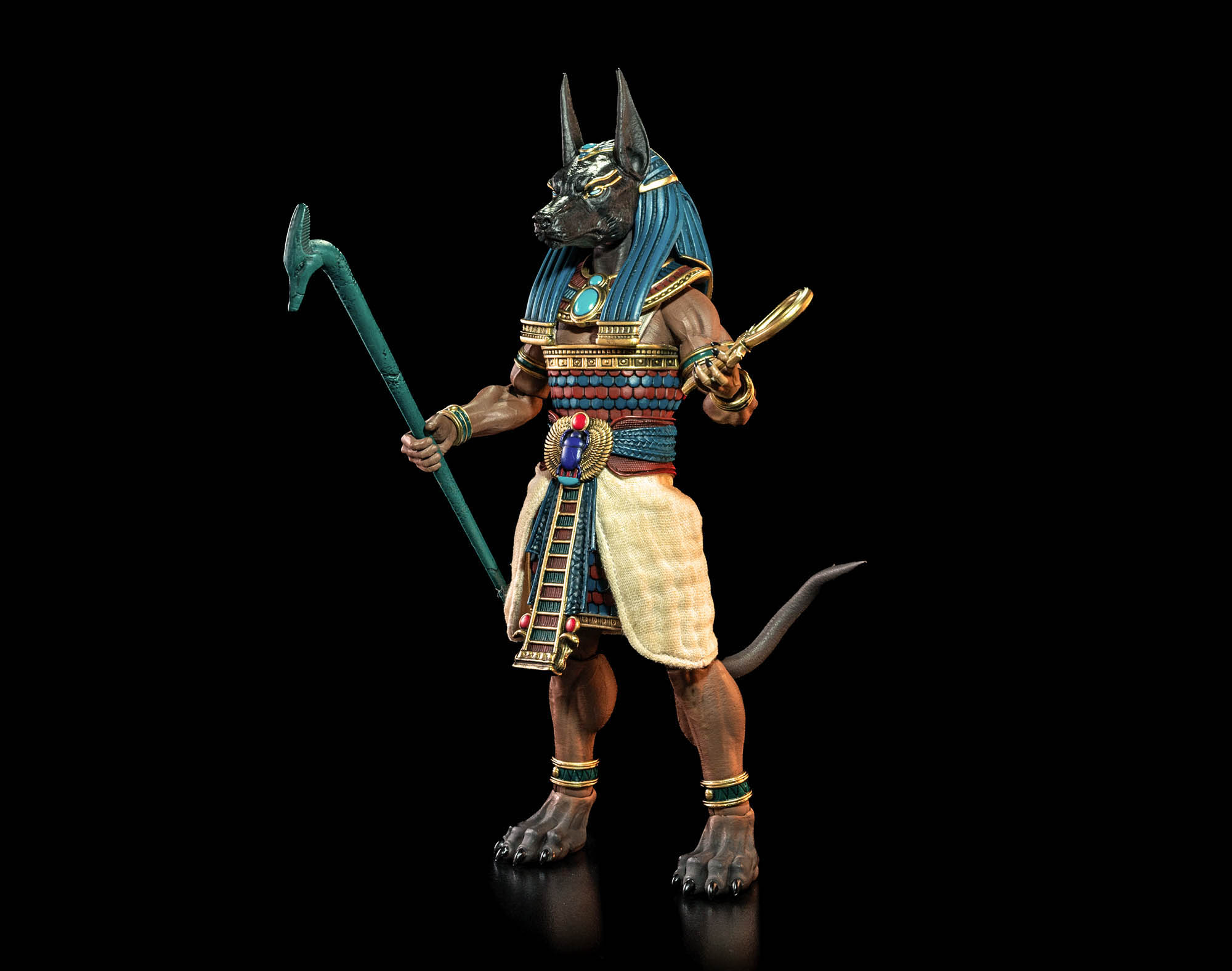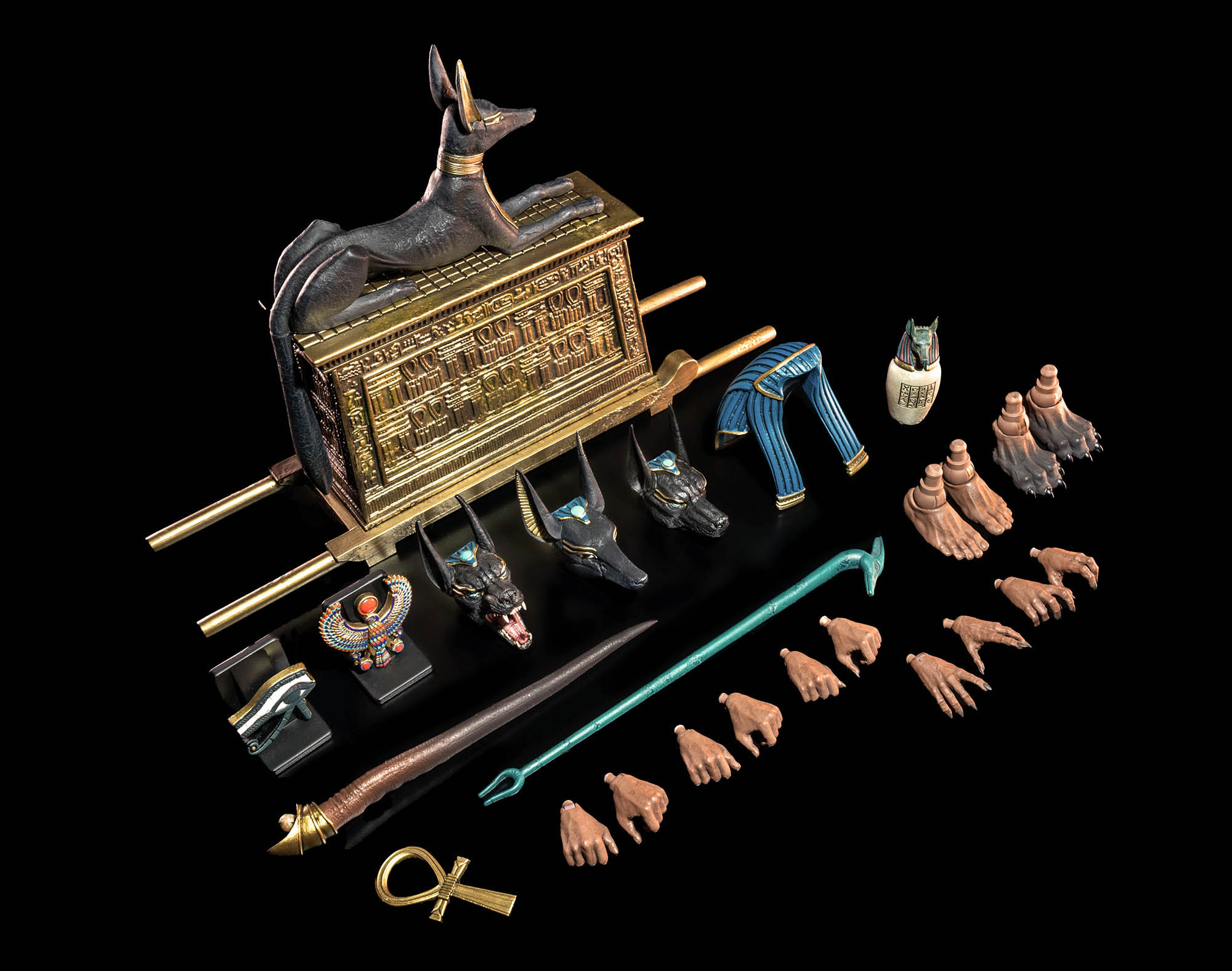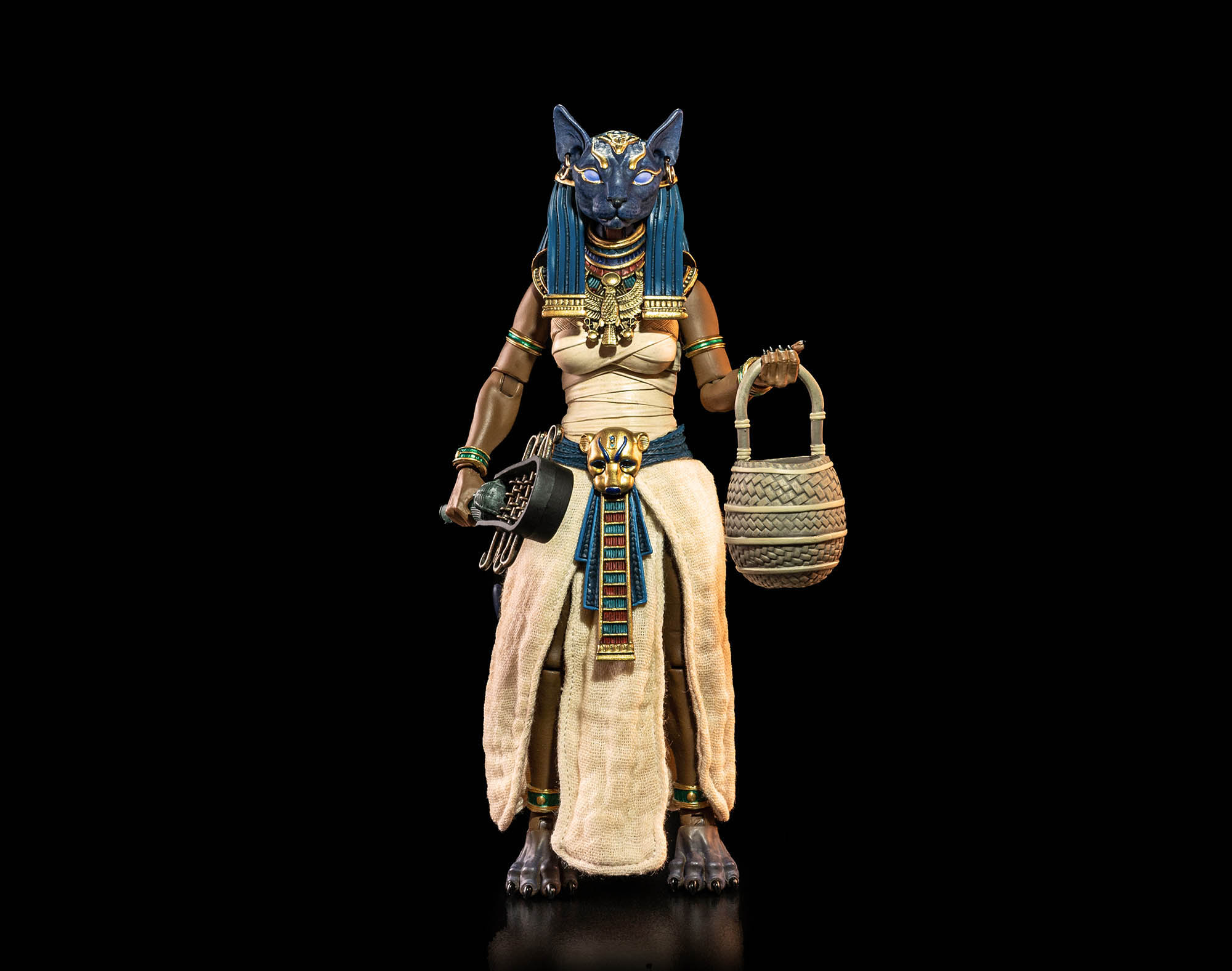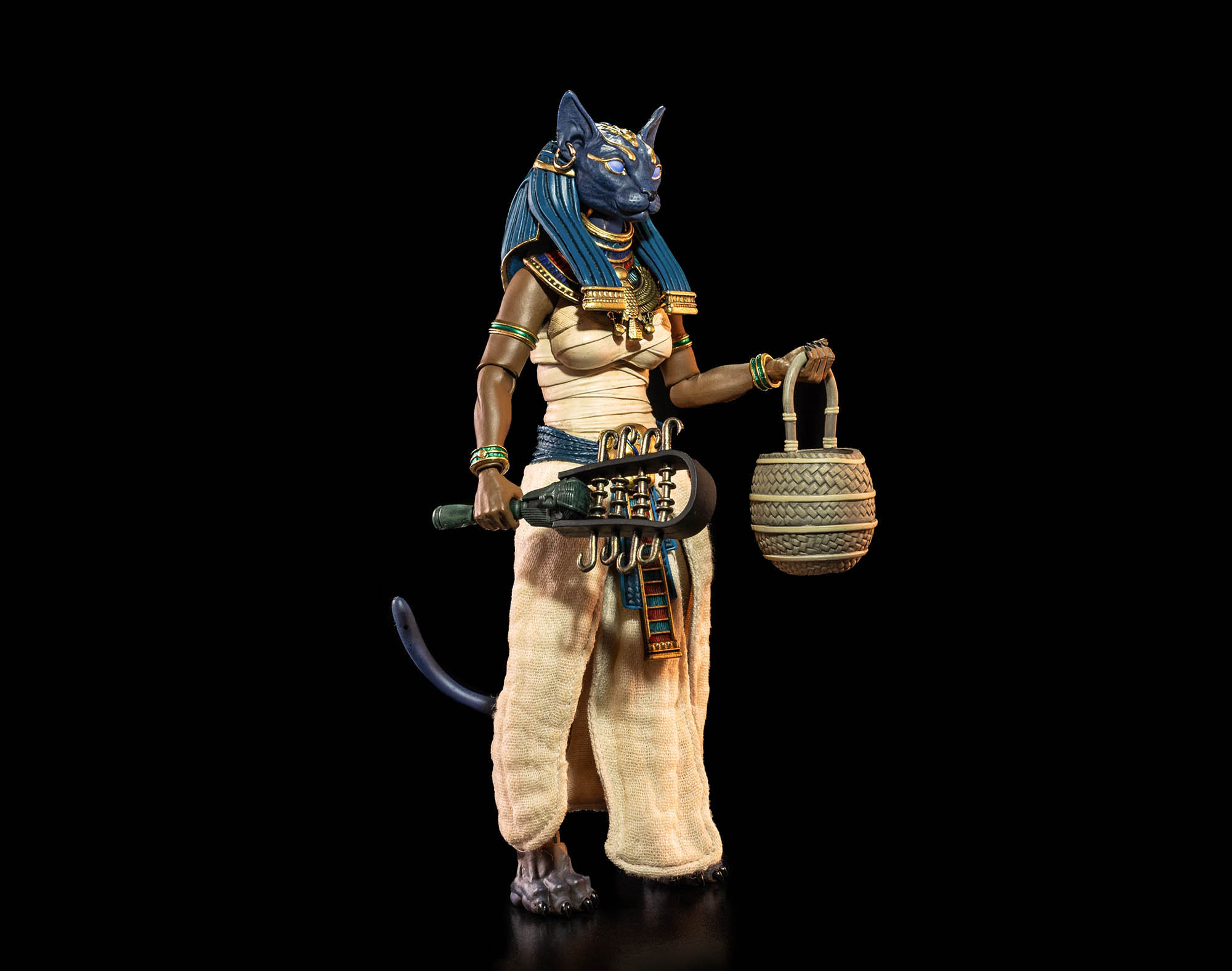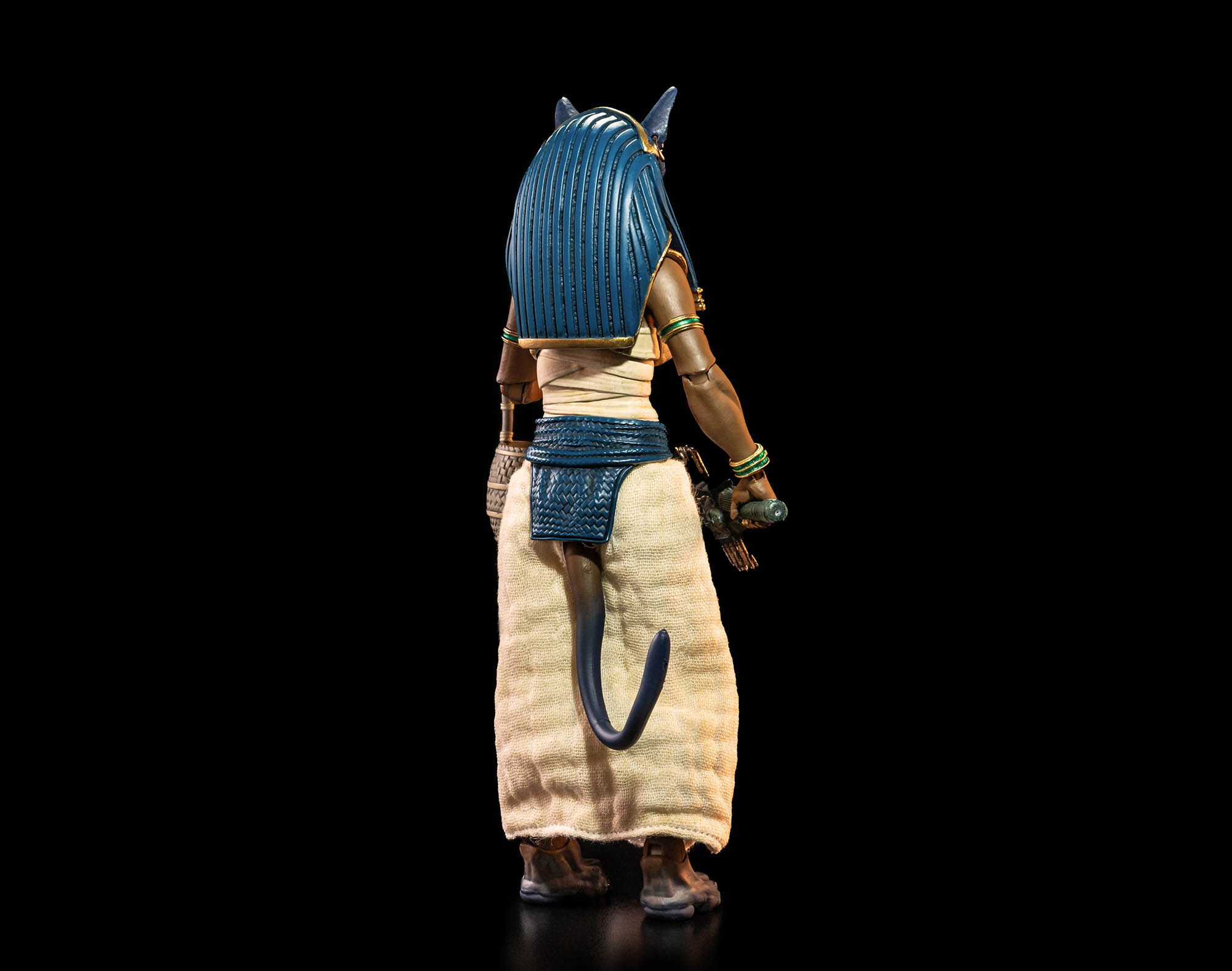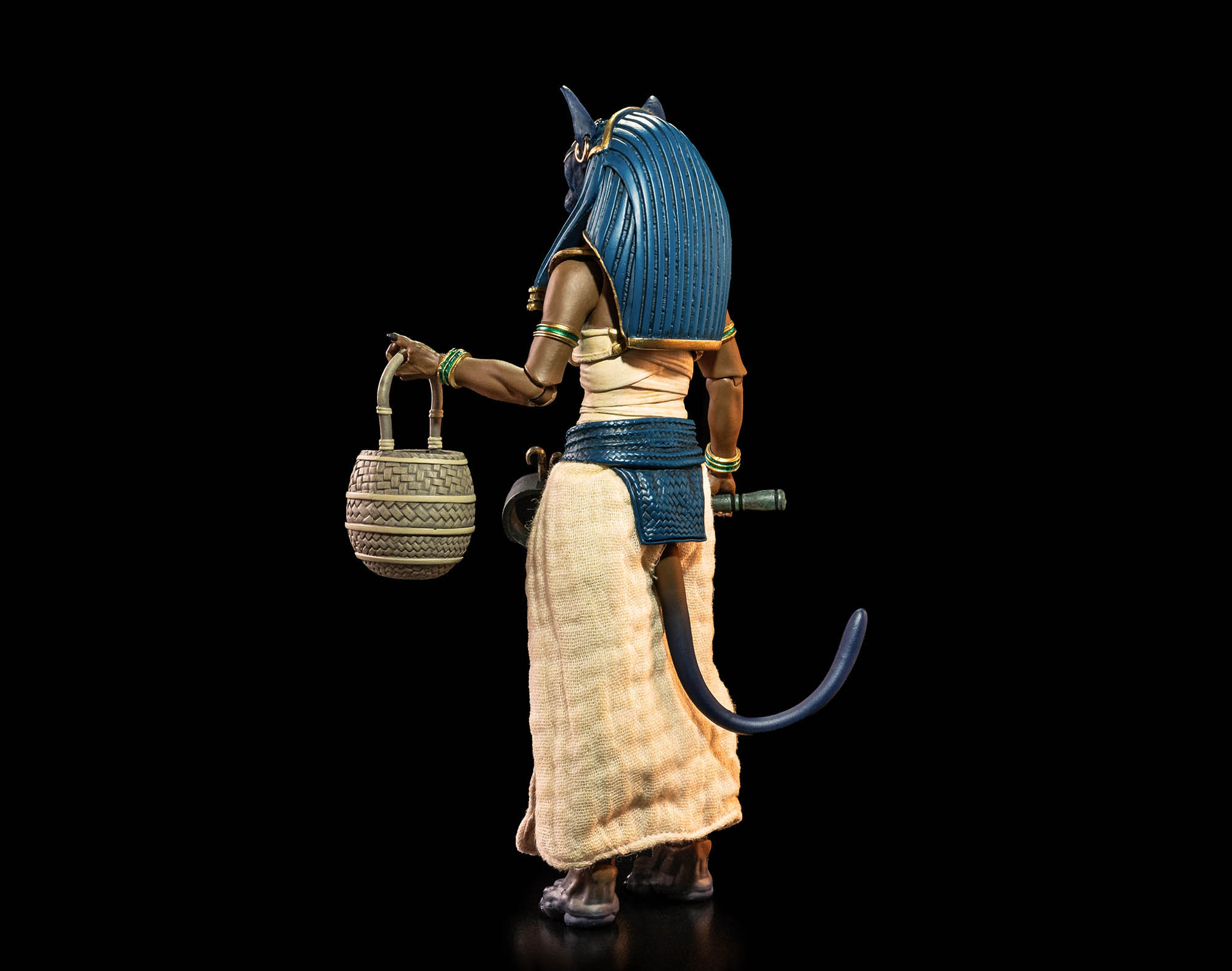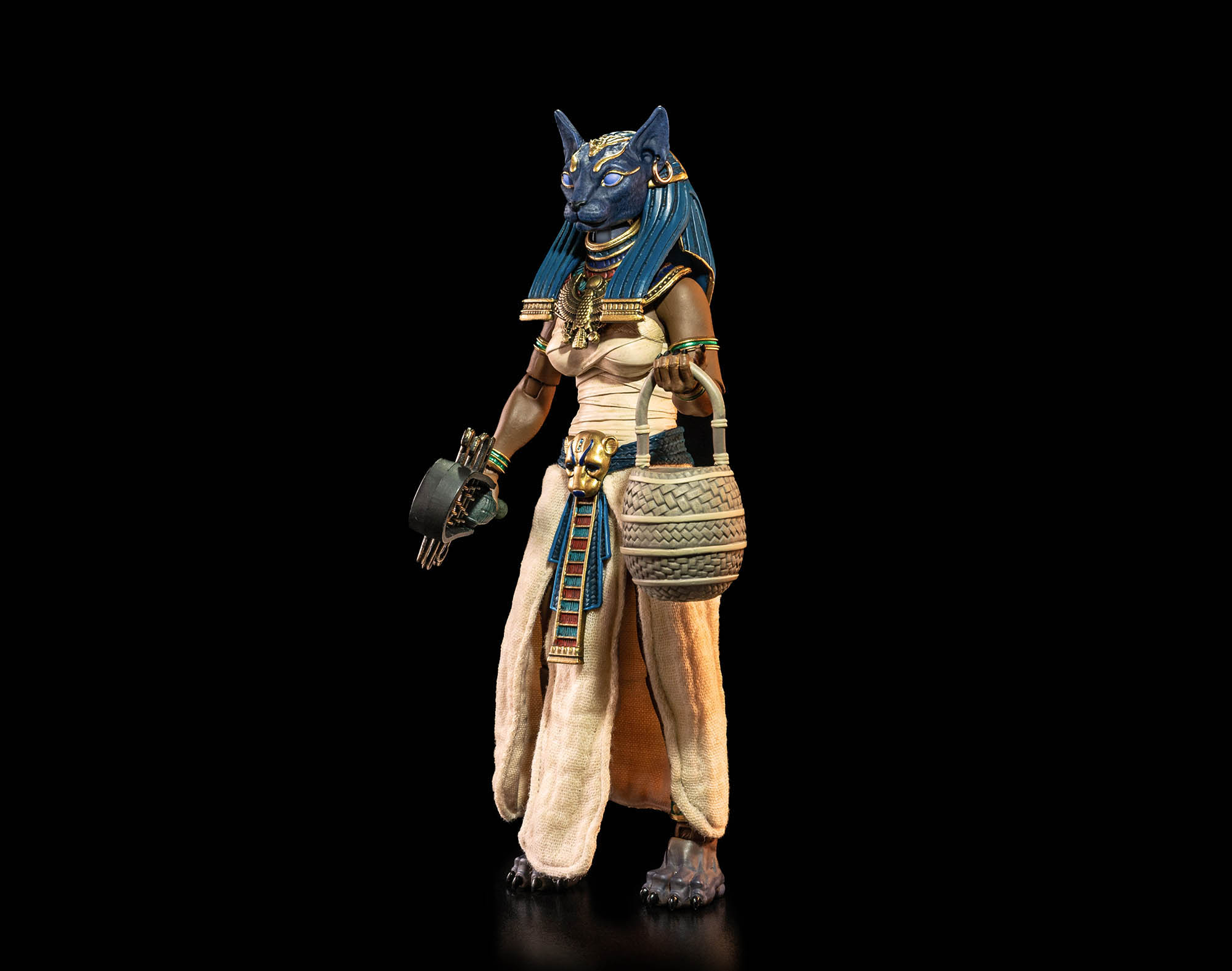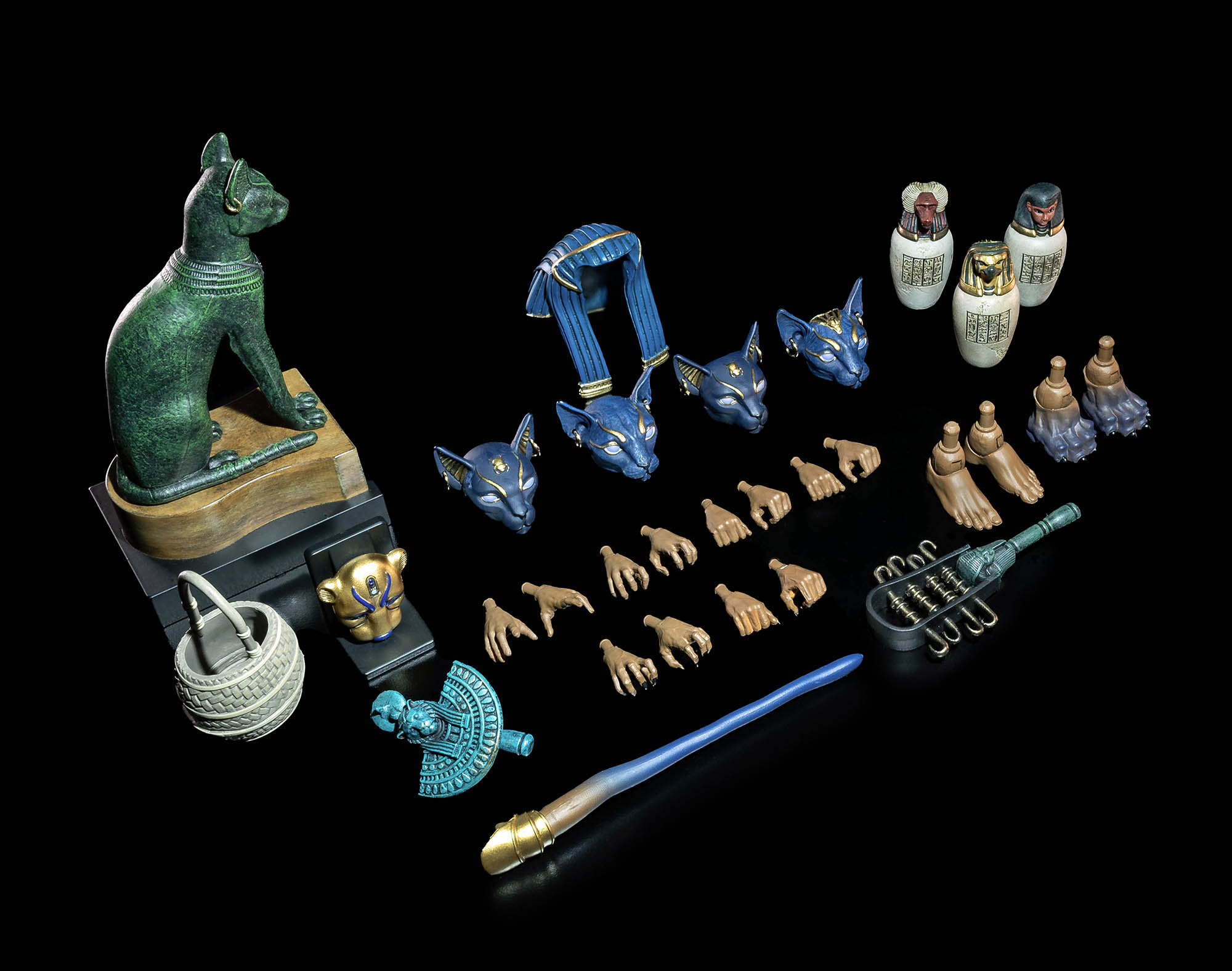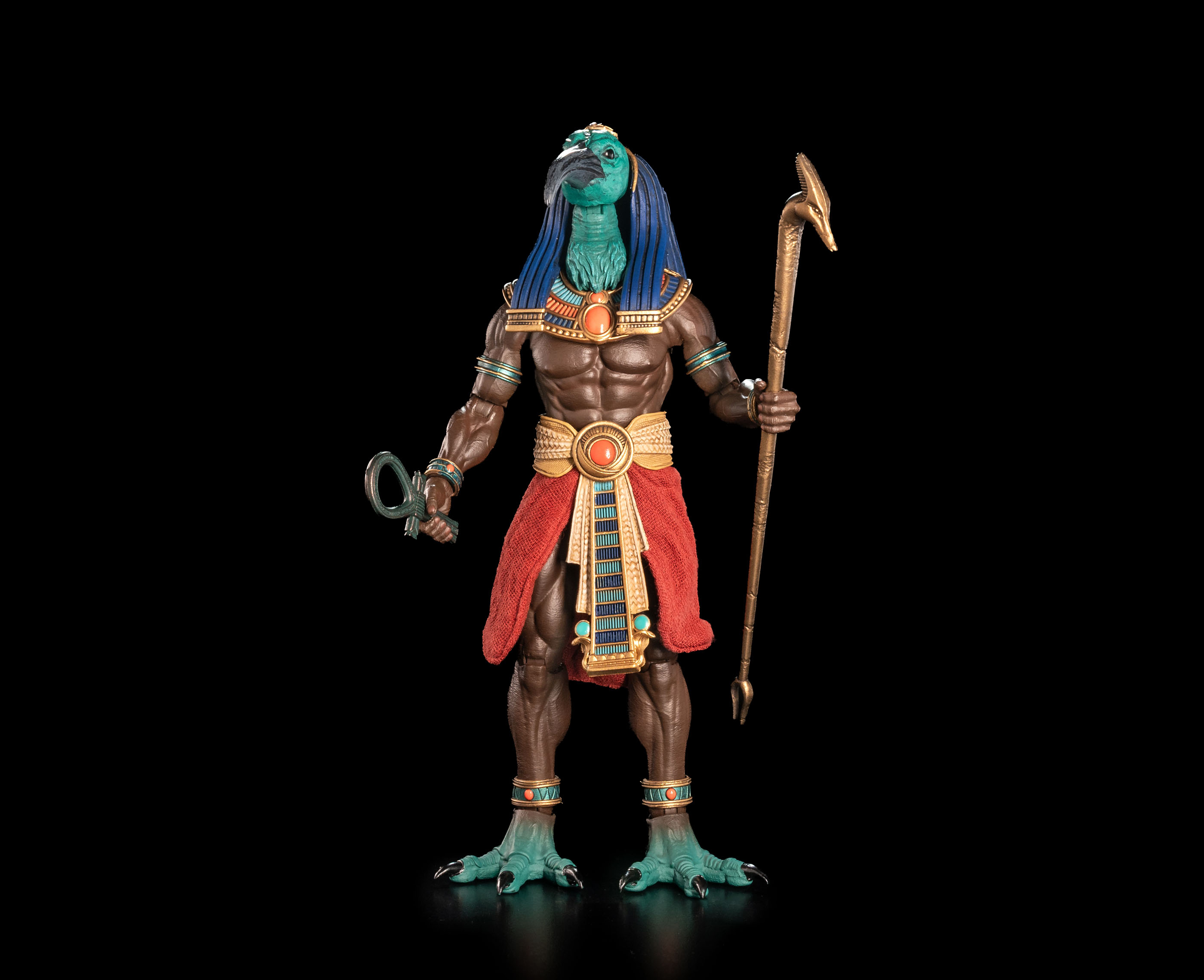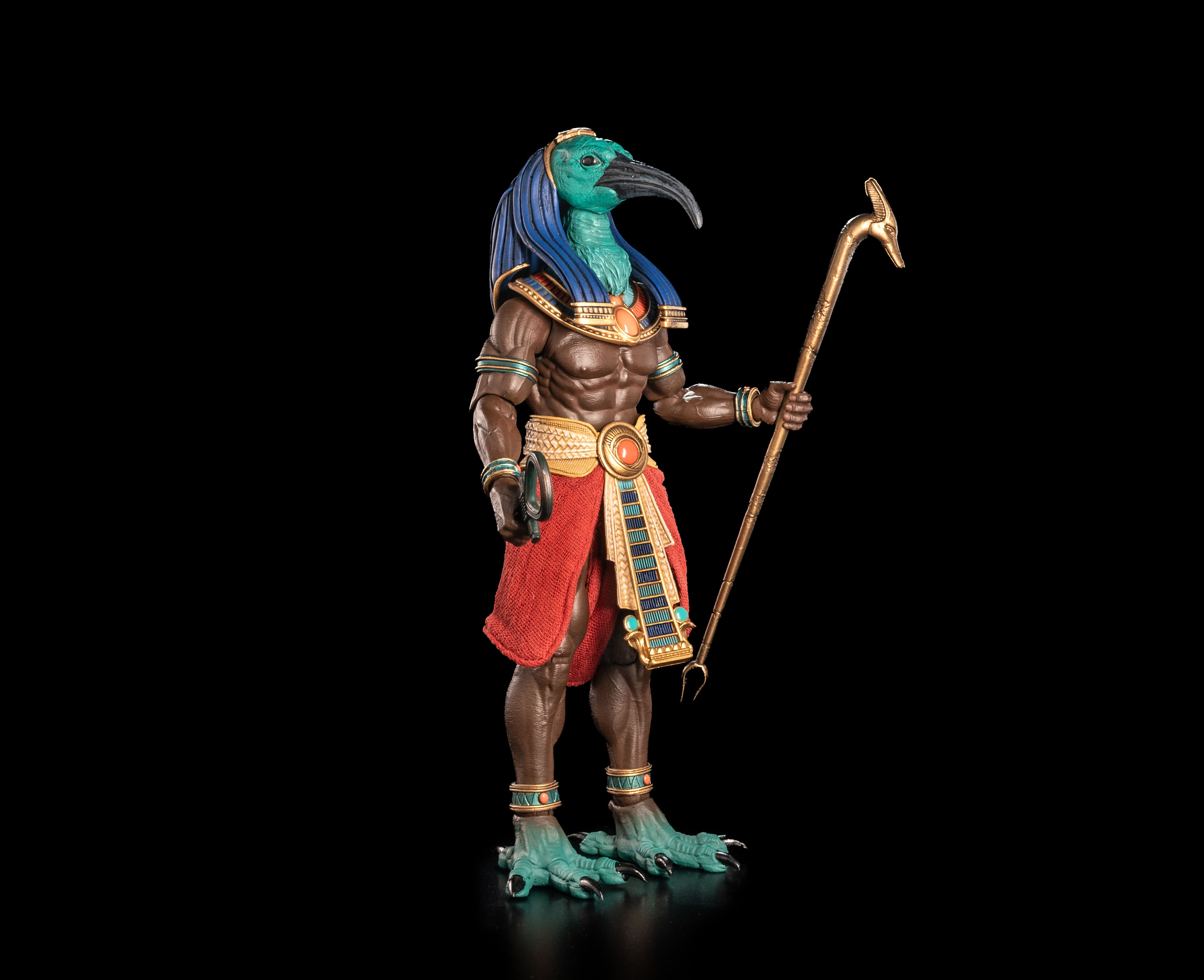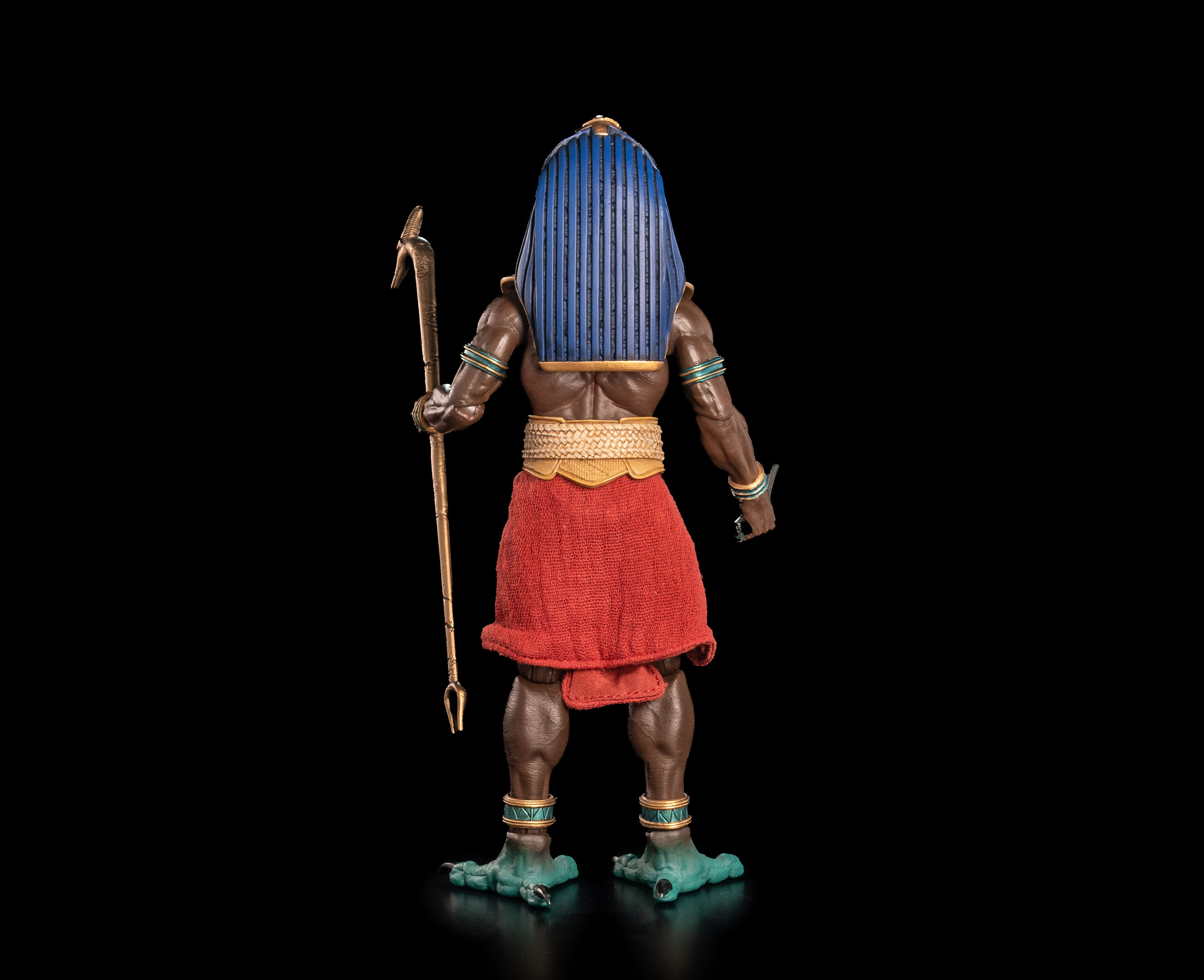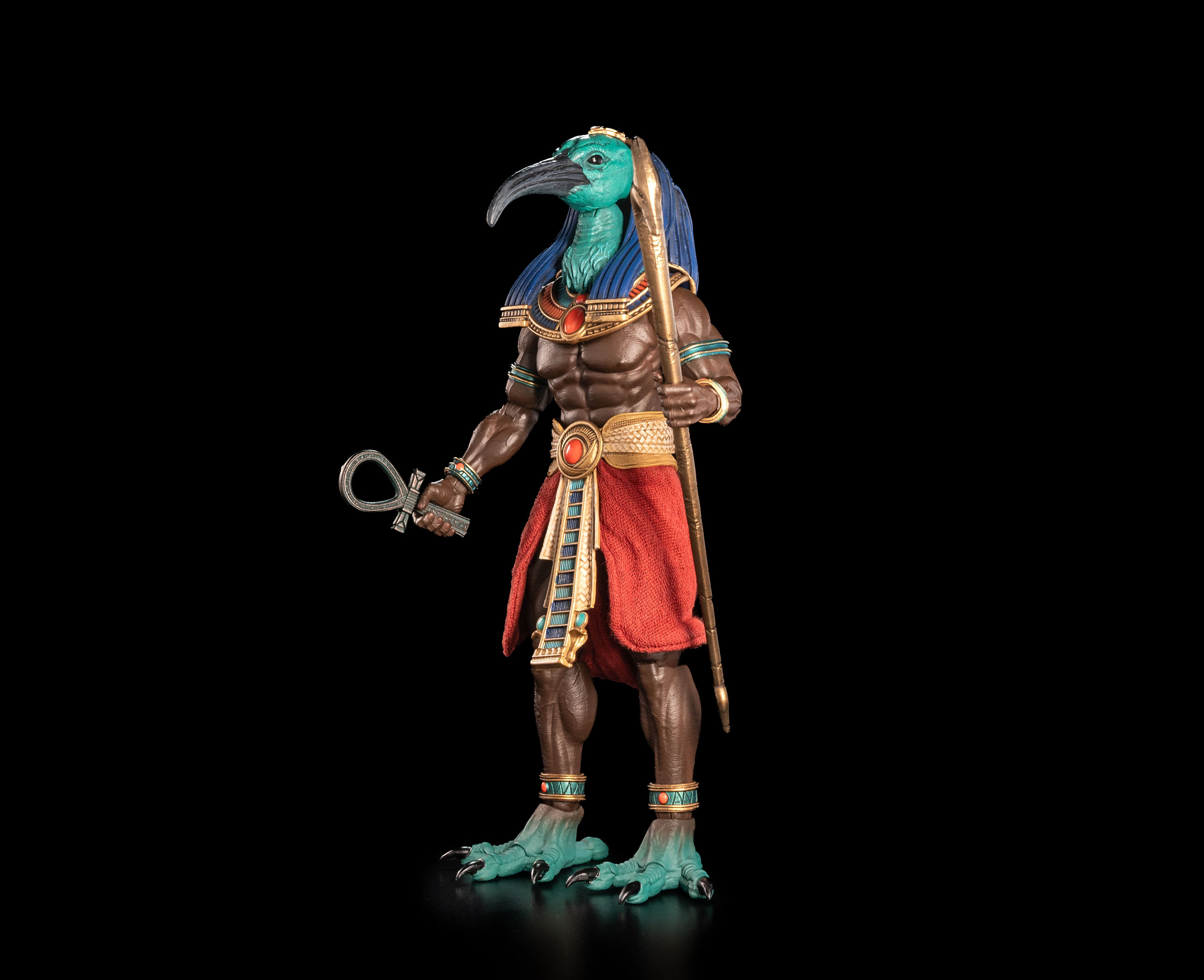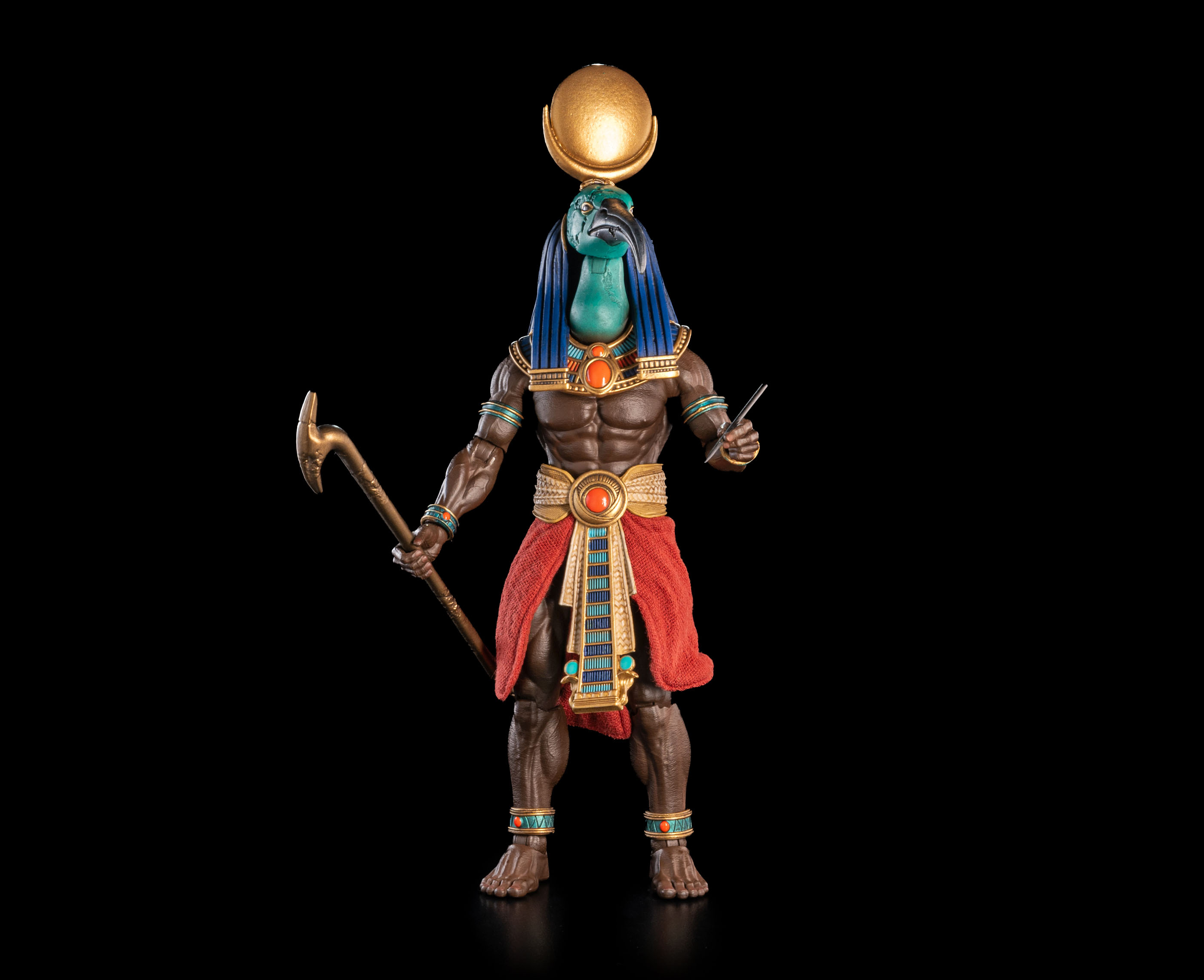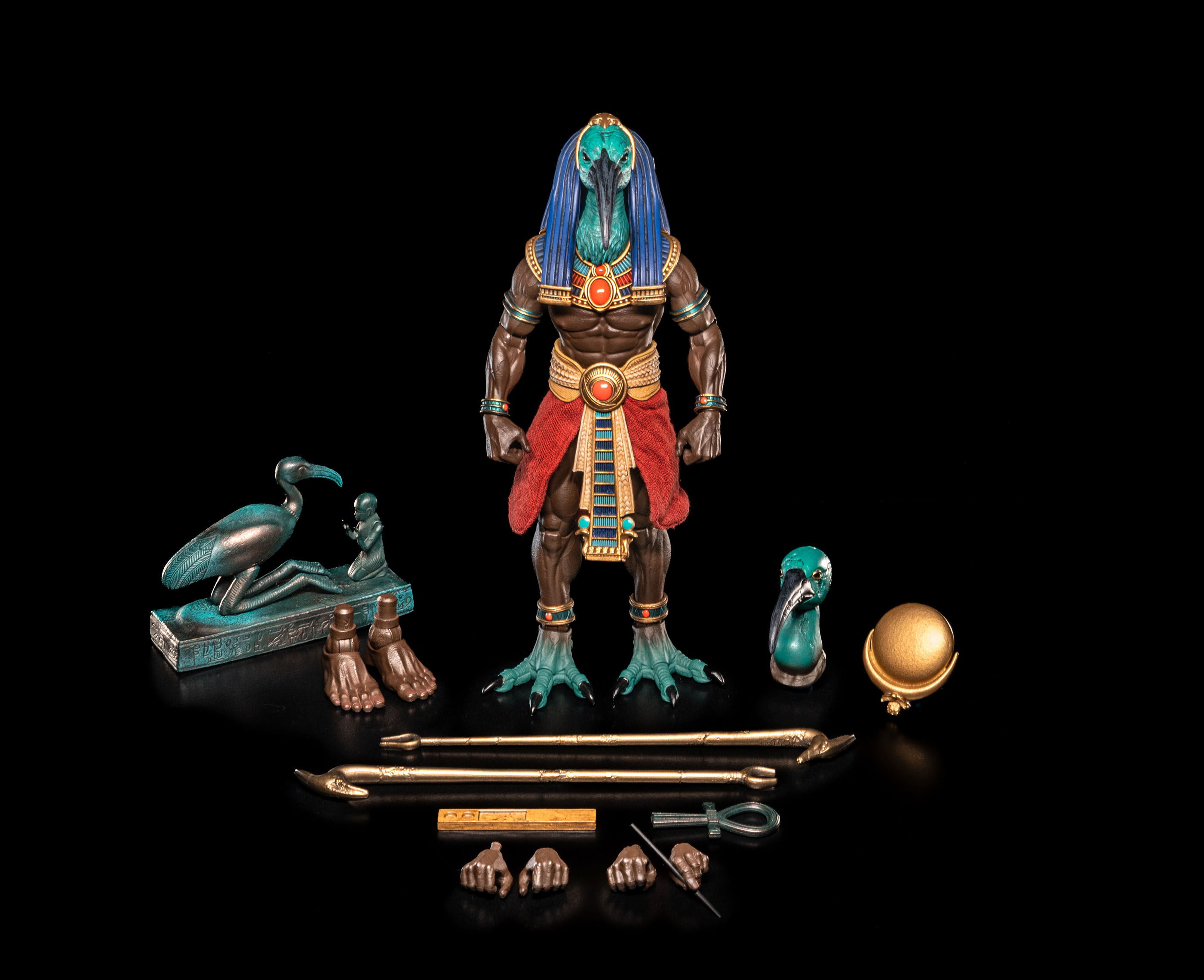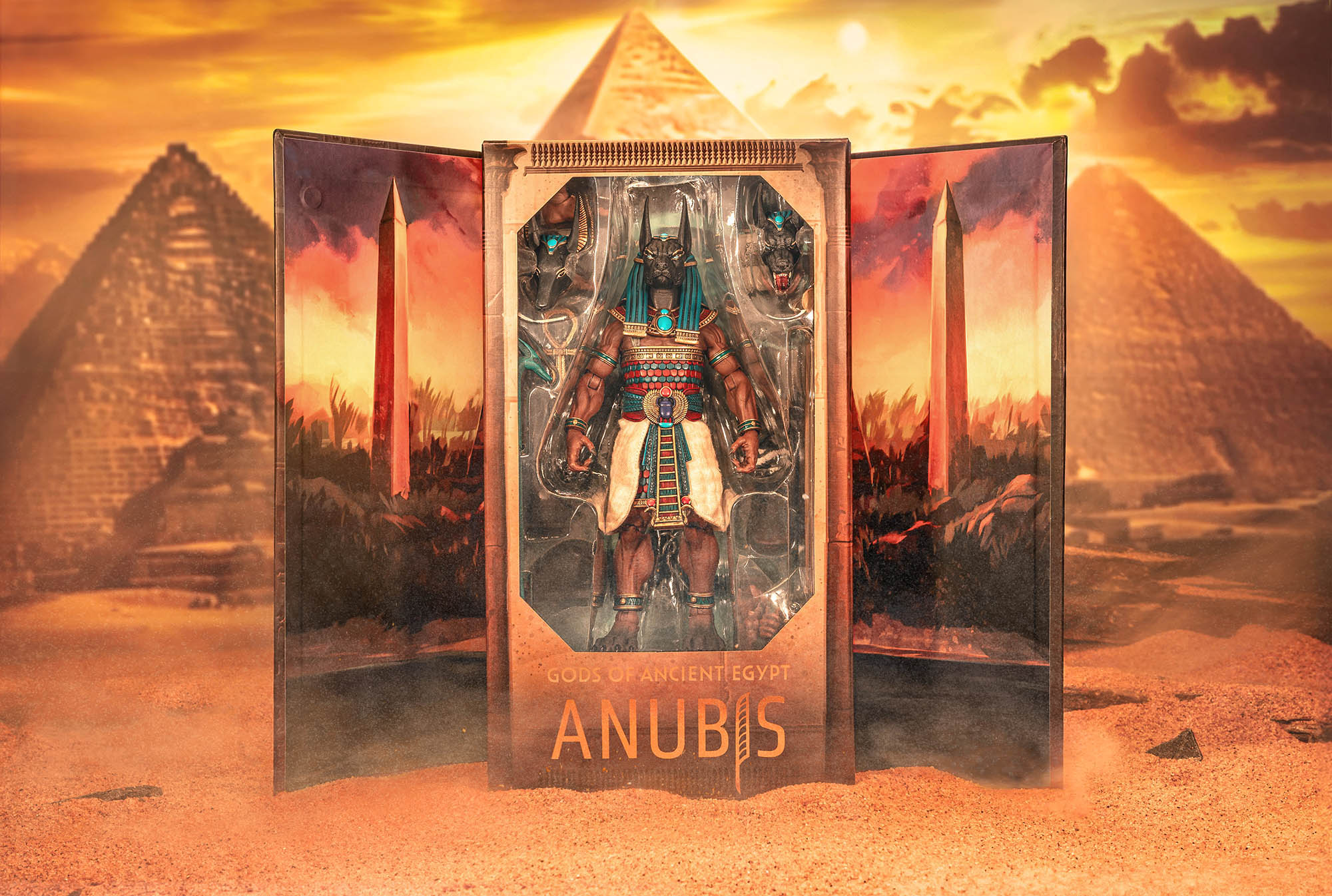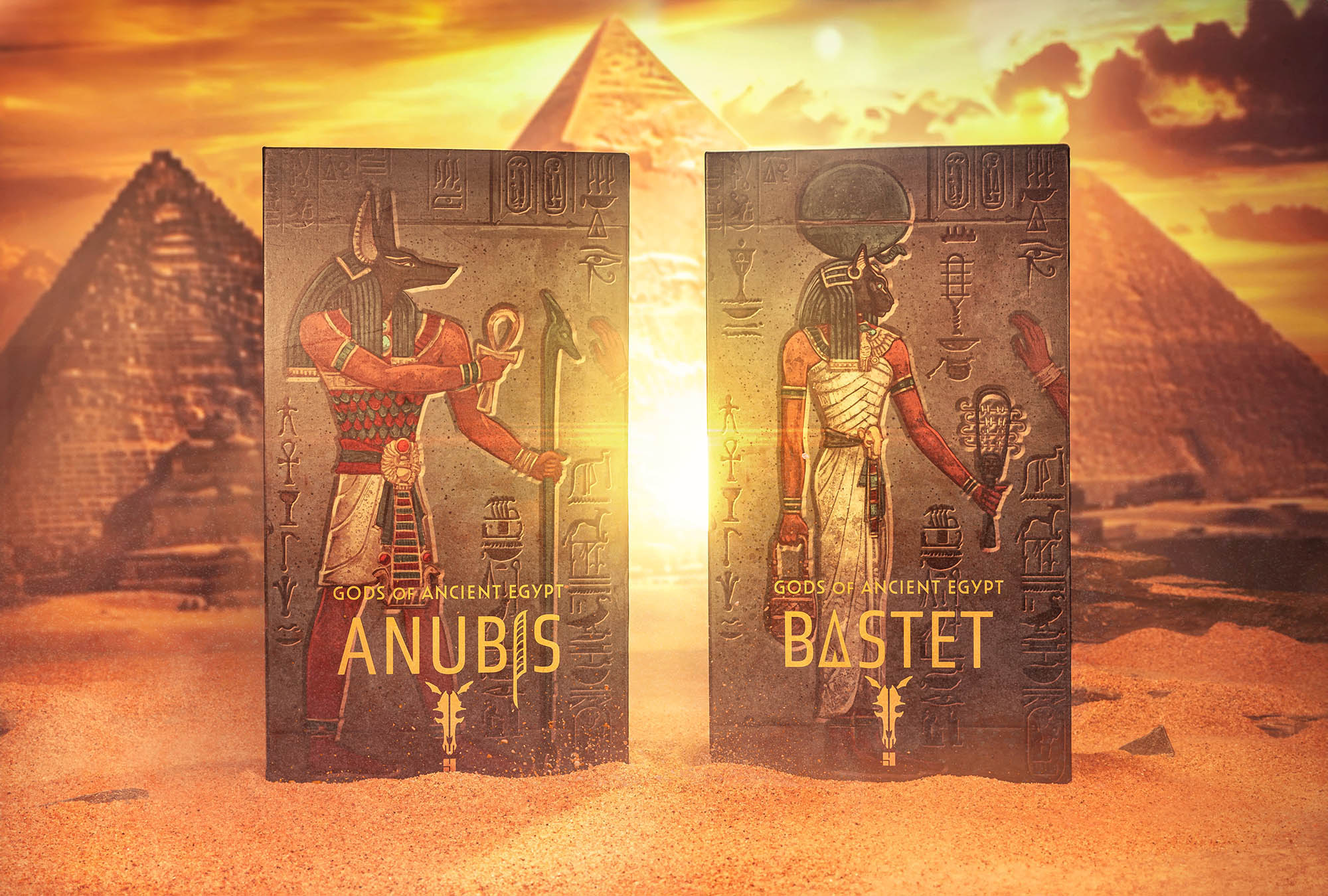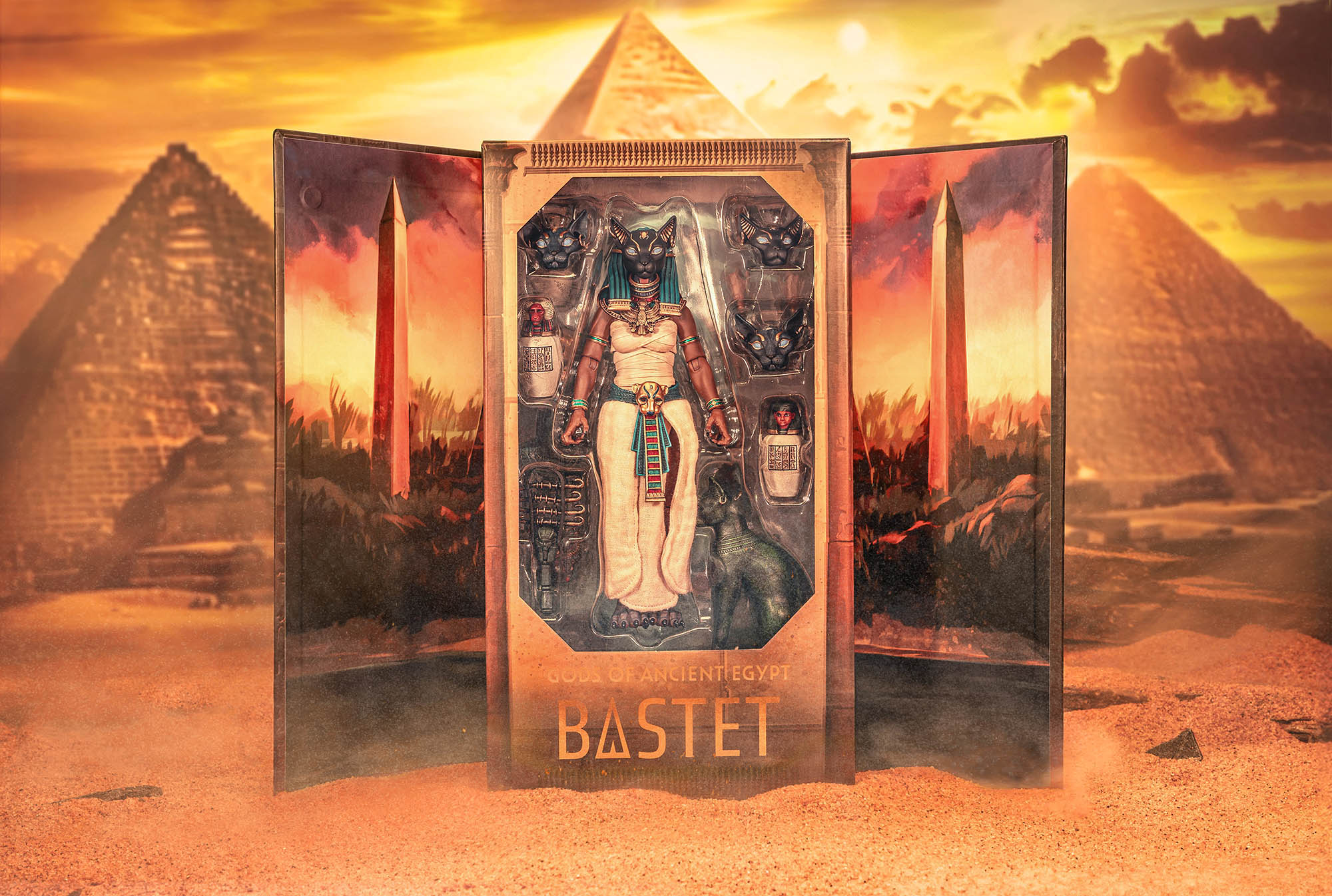The Time of the Gods
Stemming from prehistoric religious beliefs, the first evidence of deities in Egypt comes from around 3100-2868 BC, a time known as the Early Dynastic Period. Artwork from this time depicts a wide variety of human and animal figures. This artwork eventually evolved to resemble many of the gods which would populate the pantheon of this religion.
Many of the deities worshipped by the people of ancient Egypt represented elements of the natural world, such as the sun god, RA, or important aspects of life and society. Death and the afterlife were important aspects of Egyptian society, and a number of the gods and myths of this time center on the passage between life and death.
Depictions of the gods of ancient Egypt, many of whom bore the heads of animals, were often meant to illustrate aspects of that deity’s character or duties. These gods were worshipped by ordinary people as part of their daily lives, as well as through official religious practices and ceremonies. In these ceremonies, statues of the gods were anointed and presented with gifts as songs were sung to encourage the deities to remain generous to the people of Egypt.
Belief in these gods, and the practices for honoring them, began to wane in the third century AD. The last formal cults of this religion died out sometime in the fifth or sixth century, yet aspects of their worship practices would be adapted by other religions. Evidence of these gods and the beliefs of these ancient people would be found many years later through the discovery of temples and tombs and in the form of sculptures and paintings. Our modern understanding of this time comes from these discoveries, and the depictions of these gods stem from the surviving artwork of this civilization.

Meet the Gods
Anubis is the deity charged with the task of guiding souls from the world of the living into the afterlife. As part of this journey, Anubis served as “Guardian of the Scales.” The ancient Egyptian funerary text, “The Book of the Dead,” depicts Anubis as he performs the rite of weighing the heart of the deceased in the Hall of Two Truths. This ritual involved placing the heart on one side of a golden scale, while a feather was placed on the opposite side. The feather represented the embodiment of the Ma'at, or “truth,” and it was that feather which a person’s deeds were weighed against. If the heart was heavier than the feather, then the soul was judged to have done more evil than good in life and was consumed by Ammit, the Devourer of the Dead. If the heart was lighter than the feather, the soul was ushered into the Kingdom of Osiris where it enjoyed the rewards of the afterlife.
In addition to his important role in the conveyance of the dead and the judgment their souls, Anubis is also known as the patron god of embalmers. In the Osiris legends, it is Anubis who embalmed the God of the Deceased and protected the body after Osiris was killed by his brother, Set. After Set assumed the form of a leopard, Anubis killed the evil beast and wore its skin as a warning to evildoers, thus becoming known as the Protector of Tombs and lord of the sacred desert necropolis.
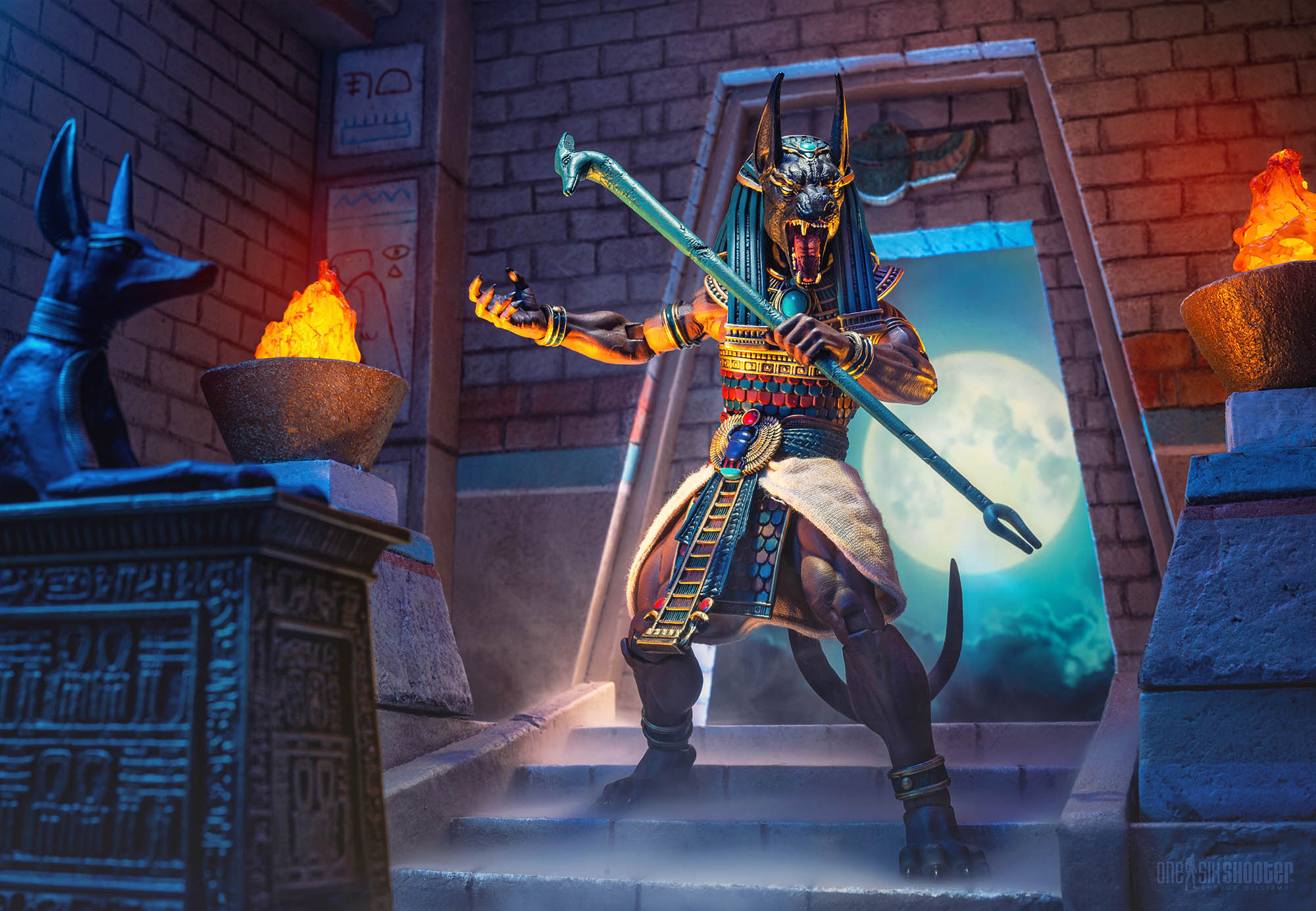
Once a fierce lioness warrior and a goddess of the sun, Bastet’s role changed during the course of ancient Egyptian history. Her sister, Sekhmet, is also a feline-headed deity, which can make it difficult to differentiate between the two in the iconography of these ancient times. Although early stories do little to distinguish these two daughters of the sun god Ra as individuals, later tales attribute many of the vicious and vengeful aspects of these deities to Sekhmet, while Bastet became the “Mother of Cats,” which is how she is commonly known today. In addition to her connection to the sun and to felines, Bastet is also a fertility goddess and the realms of pregnancy and childbirth are part of her domain.
Bastet is often depicted as a protector who accompanies her father on his daily chariot ride as he pulls the sun through the sky. At night, Bastet transforms into a cat who protects Ra from the serpent Apep, a chaotic being who embodies darkness and disorder. Ancient stories tell of the battles between Ra and Apep. In one account, Ra is said to have taken on the form of a cat to defeat his evil enemy. Many other interpretations of this story say that it was actually Bastet whose claws and teeth kept the serpent at bay and protected the world from plunging into darkness and chaos.

Thoth is a god of the Moon and is also associated with writing, wisdom, magic, science, and the judgement of the dead. In the tales from this period that tell of the afterlife, Thoth was often depicted alongside other deities, including Anubis, during the rite of weighing the heart of the deceased in the Hall of Two Truths. The ancient Egyptian funerary text, “The Book of the Dead”, depicts Thoth beside Ammit, the Devourer of the Dead. Thoth would dutifully record the fate of the soul being judged by the gods, while Ammit would wait behind him ready to consume the heart of any judged to be unworthy.
Like many of the deities of this ancient time, Thoth served a number of roles and even had multiple forms in how he was represented. While the ibis-headed depiction is his most well-known form, Thoth is also commonly seen as a baboon.
Thoth is one of the Moon gods of ancient Eqypt, a domain he shares with other deities like Khonsu and Iah. He also served as the scribe of the gods and is often credited with the creation of writing and hieroglyphs, as well as the inventor of all manner of learning - from astronomy and mathematics to medicine and theology.
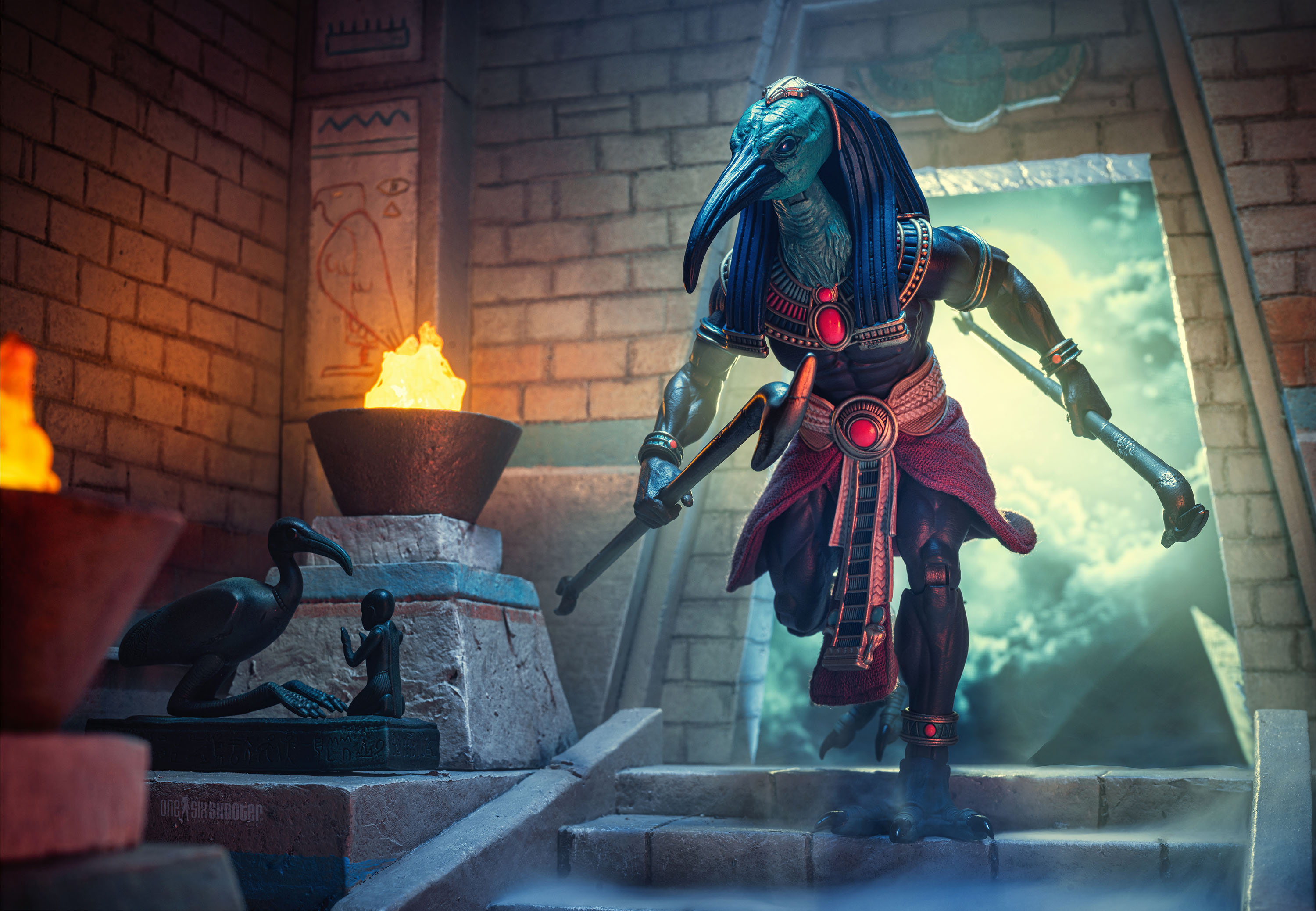
The Gods of Figura Obscura
Bringing the deities of ancient Egypt into Figura Obscura was an idea that had been discussed since the earliest days of the line. Like all the characters we explore for Figura Obscura, our goal was to create cool figures that also respected the subject matter. While stylized “battle versions” of these deities may have made for interesting toys, that is not what Figura Obscura is about. From the start, we knew that these needed to look amazing, but we also wanted them to feel like something that could be available at a museum’s gift shop after seeing an exhibit on Egyptian antiquities.
While there were many interesting options to choose from in the gods of ancient Egypt, Eric knew almost immediately that he wanted to tackle the jackal-head god, Anubis, for this release. Visually he was one of the most interesting choices, and we knew that he would be a popular character – but even with Anubis decided upon, we felt like we could do even more with this release.
While we have introduced an incredible amount of variety into Figura Obscura with our first 6 releases, we had yet to add a female character to the line. Eric knew this was a perfect chance to make this happen, while also allowing us to do something unexpected with Figura Obscura by releasing 2 distinct figures at once! This decision was also a way for us to get another member of the Egyptian pantheon made now, making it a winning decision all around.
To create Anubis, Eric decided that he wanted to resculpt the entire 1.0 “bare” body. In fact, some of the barbarian parts that were first seen publicly in the Mythic Legions: Rising Sons wave were actually sculpted months earlier with the Anubis project.
For the heads of Anubis, Eric created 3 distinct looks, including two that were more realistic animal heads (passive and growling) and one which was based on statuary and artistic depictions of this god. Those heads, along with options to display the god with either human or animal feet, give this figure a nice variety of options.
For Bastet, the original idea for the figure was to utilize mostly existing tooling from our 2.0 library of parts. Of course, once Eric began working on the character, he found himself inspired and excited. Rather than making use of the existing library, he resculpted this figure as well. The torso began with the one first created for the Mythic Legions Illythia figure. It was adjusted to create Bastet. For the arms and legs, Eric sculpted brand new limbs. Some of those new parts would also be seen first in the Rising Sons wave, specifically for the arms used on the Manisha Cinderhorn figure.
Like Anubis, Bastet also came with a few display options, including a removable headdress and portraits in both the realistic style like Anubis and a more statuary version of the “Mother of Cats”.
While this pair of new Figura Obscura figures featured plenty of new parts in their own right, Eric did not stop with just the figures themselves. He also had to consider the accessories they would come with. Looking at iconography of these two deities to see what would make sense for these figures to come with, Eric sculpted an ankh and a was scepter for Anubis, while Bastet was accessorized with a sistrum and a basket.
Beyond these hand-held accessories, the Figura Obscura: Gods of Ancient Egypt figures also include large diorama-style pieces based on actual antiquities. The reaction to the large clock that came with a previous Figura Obscura, the Masque of the Red Death, gave us the confidence to include some diorama-style pieces in Anubis and Bastet. These included “the Anubis Shrine” which was found in the tomb of Tutankhamun in 1922, and a piece known as the Gayer-Anderson cat, which dates back to 600 BC. Today, the Anubis Shrine, along with the wooden leopard head and Wadjet Eye Pectoral that also come with Anubis, can be found in the Egyptian Museum. The statue of Bastet in her full feline form is on display in the British Museum, where it has resided since it was donated in 1939. Photos of these antiquities, as well as additional information nd stories on these gods, can be found in the small booklets that accompany each of these figures.
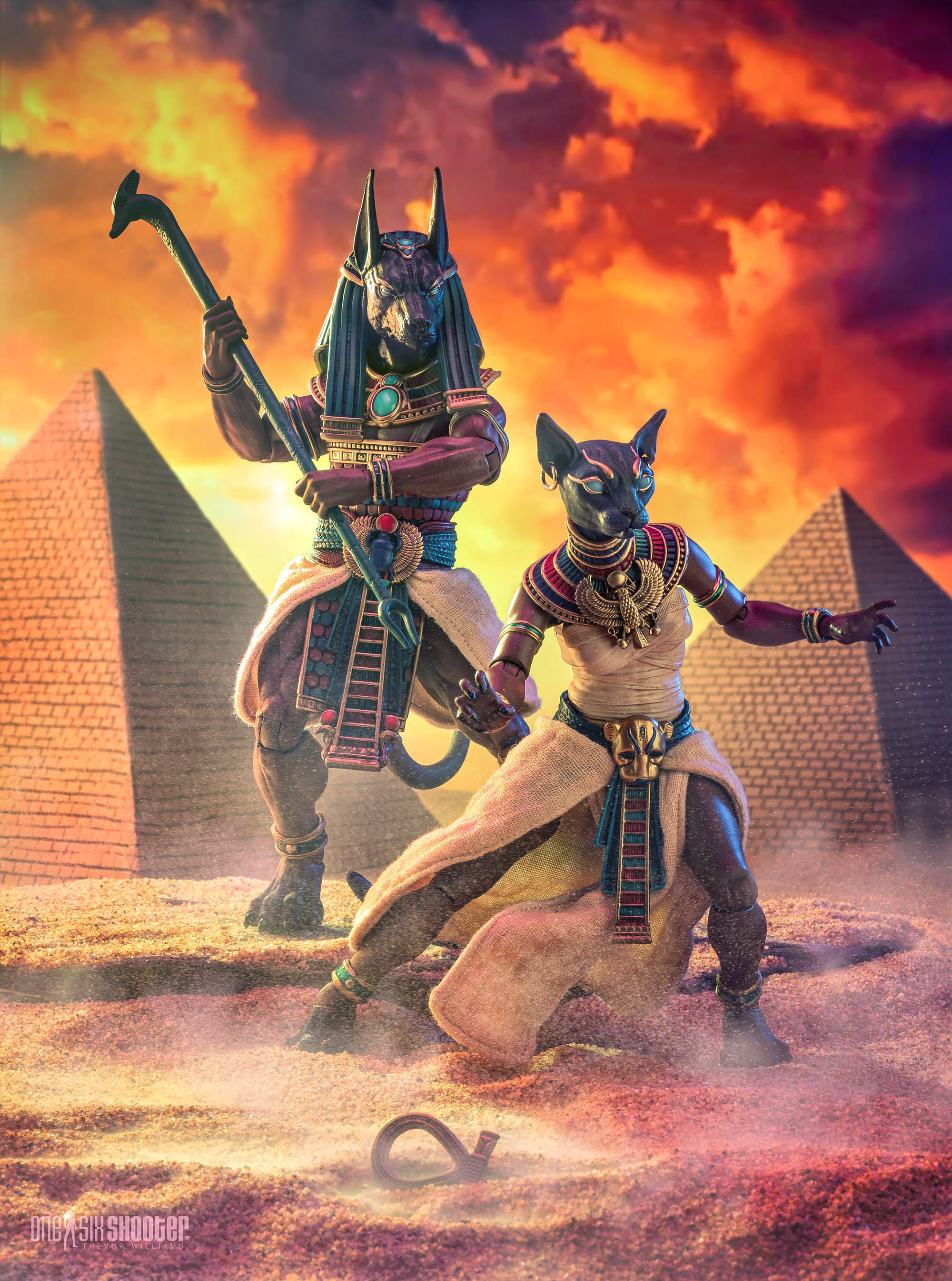
After the success of Anubis and Bastet, the studio knew that there was a demand for these Gods of Ancient Egypt, and plans were put in place to return to this pantheon as part of a Figura Obscura sub-line. The next release in that sub-line would debut as a surprise drop at LegionsCon 2025 when the god of wisdom, Thoth, appeared in the Four Horsemen Figure Faire room at the event.
Like Anubis and Bastet, the Figura Obscura Thoth figure not only includied alternate heads and hands for the figure along with some character-specific accessories (a writing tablet and stylus), but also a recreation of an actual ancient Egyptian antiquity. In this set we get a recreation of the “Group statue of Thoth-ibis and devotee on a base inscribed for Padihorsiese”, an item dating back to 700-500 B.C.
The Art of the Gods of Egypt
As with all Figura Obscura releases, the brand-new artwork that is featured on the packaging for these figures is an important part of this release. For Anubis and Bastet, Nate Baertsch looked to ancient Egyptian artwork and iconography to create these packages. The front panels of the boxes were designed as if they were sandstone walls inside of a tomb. Depicted on those walls are hieroglyphics and images of these deities. The boxes can be positioned side-by-side to work together. This was done so that in-box collectors could display Anubis and Bastet together, and also to allow for expansion in the future should more members of this pantheon of gods find their way into Figura Obscura.
The inside of the packages each feature a different scene showing the statue included with the figures in a more fantastic setting. Behind the figures is a nighttime scene which includes the Eye of Horus, while the opposite side of the magnetic front panel shows a brilliant daytime scene with the Eye of RA. Either of these paintings can be used as backdrops for the figures themselves.
In addition to being used in the informational booklets included with the toys, the art from the Figura Obscura: Gods of Ancient Egypt set was also used on enamel pins, mugs, and t-shirts which were available at the time of the figures’ release.
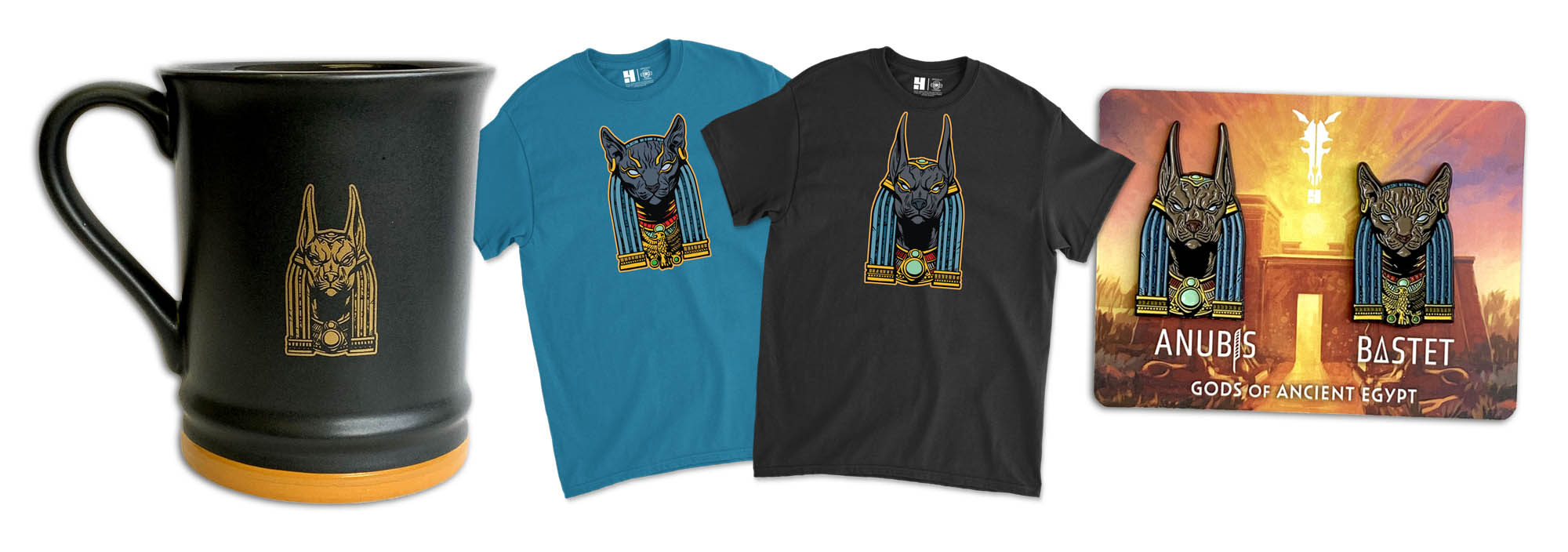
For the Thoth packaging, Nate created a box that works wonderfully well alongside the previously released Anubis and Bastet figures. In fact, Thoth was hiding on the back of those packages all along as a bit of a teaser of what was to come! The idea with these packages for the Gods of Ancient Egypt has always been that they could be displayed together with either the front panels showing or the side panels to create a cool display for those fans who do indeed display these figures in package or who display the packages themselves.
One notable new art addition in the Thoth package is the inside backdrop panel which features a new piece of artwork from Tom Tolman (as seen below).
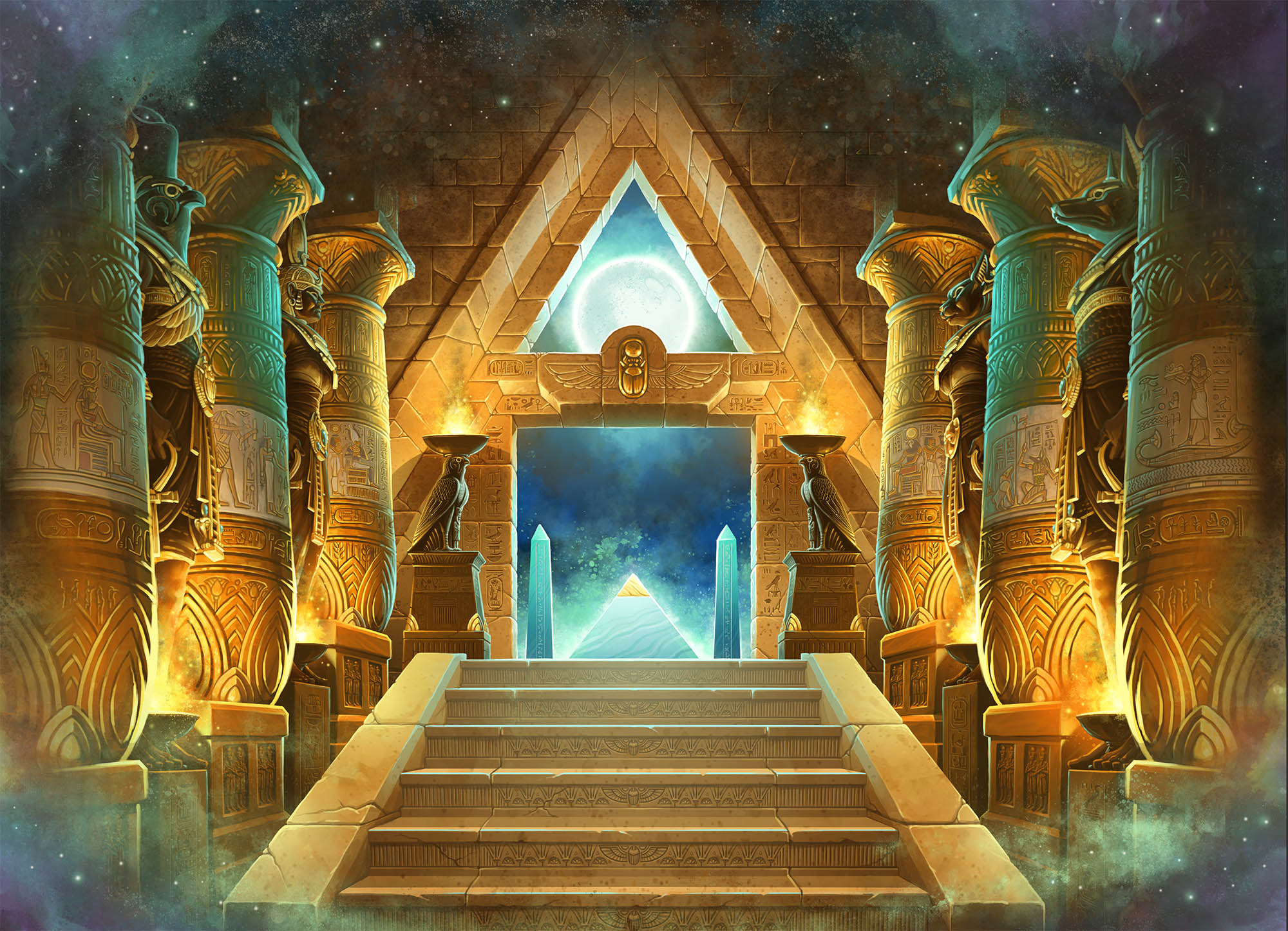
The New Gods
As with previous Figura Obscura releases, a second version of the "God of Ancient Egypt", offered exclusively via Four Horsemen Studios' Approved Retailer partners, was unveiled in early 2025. These new edition versions of Anubis and Bastet replaced their flesh-tone bodies with a black scheme to match their heads. All of the items available in the original releases would be included in these new versions, but those items would be repainted for the retailer editions.
While Anubis and Bastet would be sold separetely via retailers (as opposed to the first release which was a set of 2 only), the image below shows the pair and all their accessories together.

Exploring the Treasures of Figura Obscura
Once again, the Figura Obscura line surprised and delighted fans with the reveal of the Gods of Ancient Egypt. From the first dual figures released for the line (unless you count the Headless Horseman and his steed), to the line’s first female release, to our first ever exploration into deities of the ancient world, this latest release has shown once again that you never know who could be the next character to make their way into the halls of Figura Obscura.
